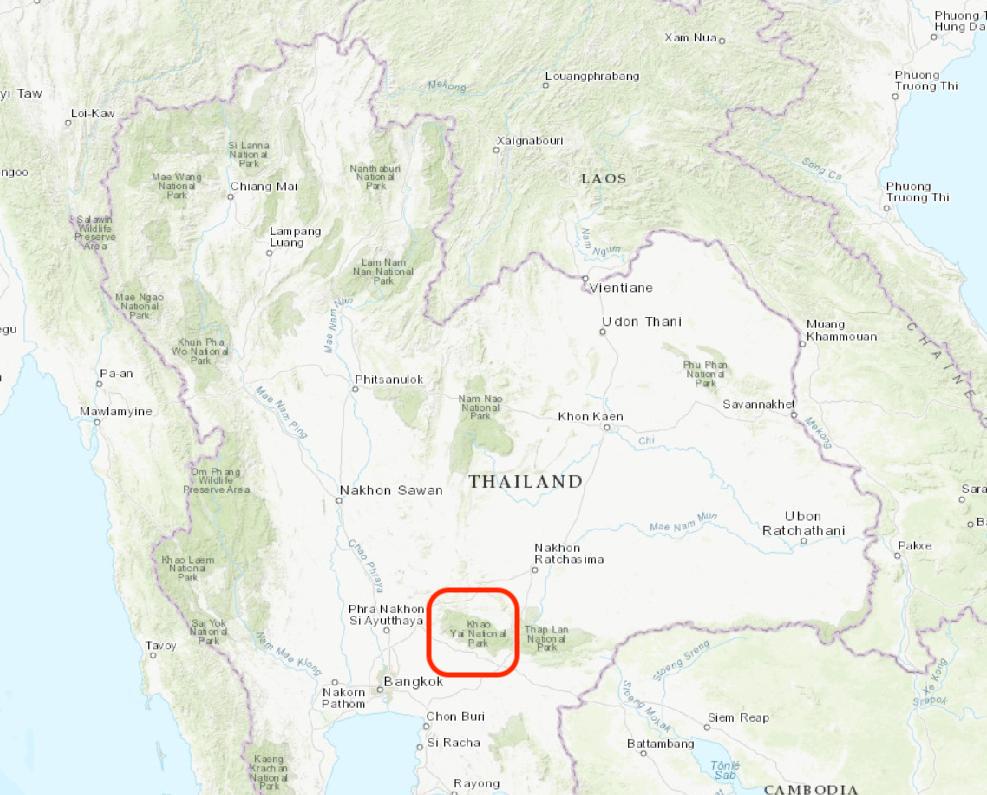Carboniferous at Khao Yai Fm
Type Locality and Naming
Unnamed Mississippian formation (with a reference section at Khao Yai). This Lexicon entry is to enable a description of the lithology, fossils, etc.
Synonym:
[Figure: Screenshot from ESRI topographic map of QGIS, with the type locality highlighted.]
Lithology and Thickness
Shale (dominant lithology) but with limestone units forming up to ca. 100-m thick small limestone hills; plus siliceous shale, chert, limestone, sandy limestone and minor sandstone. Total is up to 1000 m thick.
Relationships and Distribution
Lower contact
Upper contact
Regional extent
The strata are strongly folded and crop out in three main areas: the northern tip of Khao Yai, Khao Kradat and Khao Yai Mo Noi. Limited to the Klaeng Zone of SE Thailand. "No correlative rock unit is known in the Sukhothai Zone of Northern Thailand; there, the possible Carboniferous is mostly siliciclastics and/or volcaniclastics (the Dan Lan Hoi Gr) and carbonates and calcareous beds are uncommon. Thus, the Carboniferous in the Klaeng Zone is unique in its lithology and fossil composition."
GeoJSON
Fossils
" In the Khao Yai area, most fossils have been found in the lime- stones. Fontaine et al. (1999c) listed the foraminifers Tetrataxis media, T. acuta, Endothyra ex gr. similis, Endothyranopsis crassa, Koskinobigenerina prisca, Globispiroplectammina mellina, Pseudoammodiscus volgensis, Archaediscus ex gr. convexus, Mediocris mediocris and Eostaffella parva and the corals Hexaphyllia, ?Kueichouphyllum, Siphonodendron and Solenodendron. These fossils suggest a Late Visean – Serpukhovian age for the Carboniferous of the Khao Yai area but, as noted above, a Bashkirian foraminiferal fauna has also been reported from Khao Kradat in the same area (Fontaine et al. 1996a)." (Ueno & Charoentitrat, 2011)
Age
Depositional setting
Additional Information
